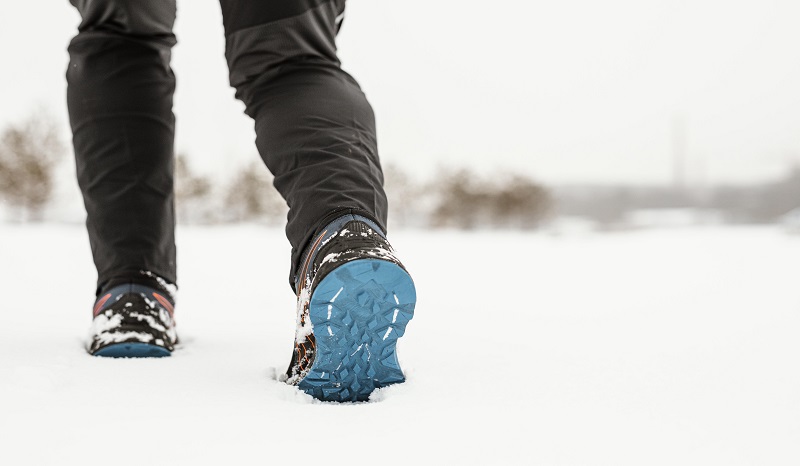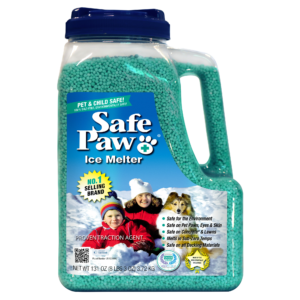How To Increase Traction When You Are Walking On Snow And Ice

Hundreds of people get hurt each year when they fall on snow or ice, with many suffering severe injuries. It doesn’t feel safe to go out of the home or your car to walk on ice. The majority of slip and fall accidents happen at or near home, on flat but slick terrain. Some ways can make your walk on ice horror-free in this winter season.
A driveway or sidewalk covered with ice has a thin layer of melted water on its surface that reduces the traction between the surface of your foot and the ice layer.
So how to get traction on ice?
Adding traction to walk on ice isn’t just a matter of convenience but safety. Below are some of the best ways to increase the traction on ice and walk comfortably without the risk of falling and injuring yourself.
Traction Magic
Traction Magic is a natural and most effective traction agent that provides instant traction to walk on ice. A dual formula-based traction agent –Traction Magic can be applied on the surface where you want immediate traction.
It contains naturally occurring components that are safe for the eyes, skins, and paws of your pets. It consists of two types of granules – absorbers and grippers. First, the absorbers immediately suck up the water layer that forms on the surface, making it slippery. Then grippers with their spikes securely hold the ice giving a sandpaper-like effect. It makes a walk on ice safe and works effectively even on black ice.
The best part is that Traction Magic is organic and is safe for people, pets, and the environment. Traction Magic comes in containers of different sizes along with a handy disposable canister that can easily fit in your handbag and gloves compartment.
Get ready for winter with the ONLY Pet Safe Ice Melt you can trust
Shoe Cleats And Spikes
To increase traction on the ice you can use spiked boots or cleats that get attached to your footwear.
These items work well on ice and snow. However, cleats are difficult to put on and off from the shoes. Steel chains, cleats, and spikes slide readily and become a slip-and-fall hazard on tile and polished concrete. When worn indoors on hard surfaces like tile, ceramic, linoleum, sealed concrete, or epoxy, they tend to slip more.
In other words, the same characteristic that makes ice cleats a helpful safety tool outside renders them dangerous inside while walking on a hard surface.
Sand And Kitty Litter
Sand and kitty litter are also used to increase traction while walking on the snow. Sand will provide instant traction but will not absorb moisture. Hence, the risk of slip and fall still lingers on you. You have to ensure that sand used as traction does not end up clogging your drains.
Kitty litter will provide quick traction and absorb moisture, but it becomes a slick mess afterward. It gets messy and difficult to clean.
Driving on Black Ice Safety Tips You Should Know
When it comes to driving on black ice traction, prevention and preparation are your best allies. Black ice, a thin layer of ice that blends in with the pavement, often forms during early morning or late evening when temperatures dip quickly. Unlike regular ice, black ice offers no visual cues—it looks just like wet asphalt, making it especially deceptive.
So, can you drive on black ice? Technically, yes, but extreme caution is required. The key is to avoid sudden movements. Keep your steering steady, don’t accelerate quickly, and absolutely avoid slamming on the brakes. If your vehicle starts to slide, take your foot off the gas and steer in the direction you want the front wheels to go. Panicking or overcorrecting often leads to more loss of control.
As for how long does it take black ice to melt, that depends entirely on the temperature, sunlight exposure, and surrounding materials. Since black ice forms in shaded or elevated areas like bridges and overpasses, it often takes longer to melt than regular surface ice. Understanding what is the difference between ice and black ice is essential for both walkers and drivers. Regular ice often appears white or cloudy, giving some visual warning. Black ice, however, is clear and almost invisible—thus far more dangerous.
Conclusion: Choose Smarter Traction for Safer Steps
Whether you’re walking to the mailbox or backing out of your driveway, having traction on ice isn’t just helpful—it’s critical. While sand, kitty litter, and cleats offer some level of support, they come with limitations: messiness, poor indoor safety, and cleanup hassles. Traction Magic provides a modern, pet-safe, and instantly effective solution that keeps you grounded—literally. And for those behind the wheel, knowing driving on black ice safety tips can mean the difference between control and calamity. When you combine the right knowledge with smarter traction solutions, you reduce risks and increase your confidence, no matter what winter throws your way. By proactively using traction agents and recognizing the subtle cues of black ice on roads, you take the guesswork out of winter safety. Don’t wait for an accident to happen—equip your home, shoes, and vehicle with tools designed for real-world winter hazards. The right traction isn’t a luxury; it’s a necessity for peace of mind.
Get ready for winter with the ONLY Pet Safe Ice Melt you can trust
Other Ice Melt Products
Safe Paw
The Original and the #1 Pet and Child Safe Ice Melt for over 20 years. Guaranteed environmentally safe – will not harm waterways and sensitive wetlands. Safe Paw can change how winter affects our planet.

Safe Thaw
Imagine an ice melt you can put down and never worry about. It won’t harm pets, kids and your property. That’s Safe Thaw. Unlike anything else on the market, Safe Thaw can change how winter affects our planet.
